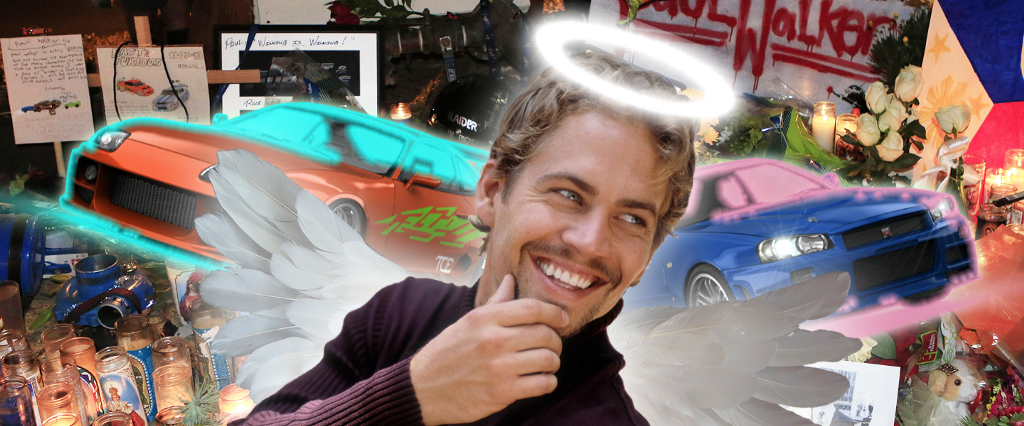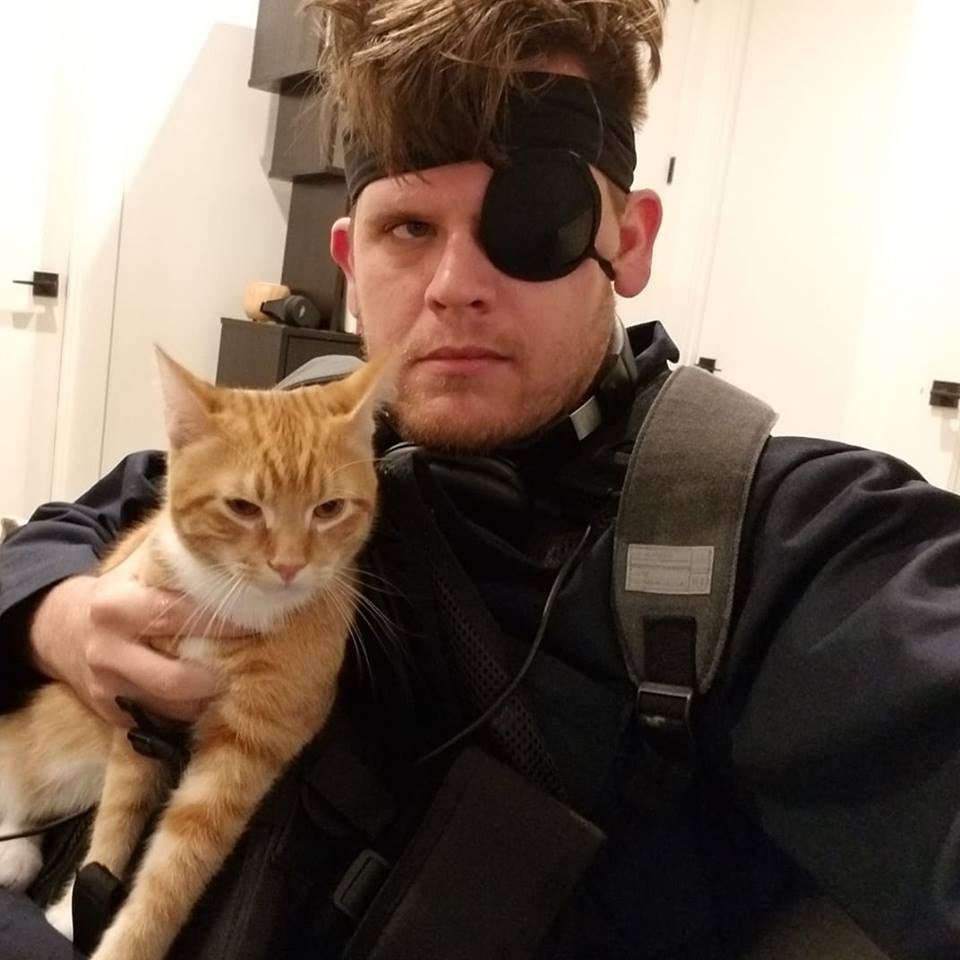Really, what should a Paul Walker tribute look like? A wake? A candlelight vigil? A pilgrimage to his spartan gravesite in the Hollywood Hills? A few dozen cars inching around a rain-slicked parking lot for hours, like a funeral procession decked out in custom rims, butterfly doors and Jolly-Rancher paint jobs?
It’s the last one.
It’s definitely the last one.
If Paul Walker meant enough to you that now, five years after his death, you still feel like you owe credence, you’re not alone. Here are scenes from Perth, Western Australia, where a small cadre of mourners took the tangerine-lit streets to show off their rigs for the annual Paul Walker memorial cruise:
Here we are in San Antonio in 2016, as a crowd of bemused bystanders watch an endless cycle of idiots burn out into an intersection:
Here we are in L.A., where YouTuber King Fresh cuts a melancholy piano twinkle over an old Inside Edition report on the car crash that claimed the Fast & Furious star’s life, before he and his friends head out into the streets (and ultimately, a mini-mall parking lot) to pay homage to Walker with an armada of vehicles similar to those that appear in the films:
It’s these moments where it’s clear that Paul Walker will live forever.
“It’s not really about business, for the past five years we’ve held these meets without any money involved,” says Joe Smith, who’s been running his Paul Walker memorial in Tennessee since 2013. “We’d like to charge a donation fee and try to raise money for one of his charities. But we feel if we put a price on it, it might take away from the most important thing — and that’s that, like it or not, his death brought us closer together and made us flourish. Everytime someone thinking about joining the car scene either watches those movies or watches a tribute video for Paul Walker, another enthusiast is born. That’s the important thing.”
Walker wasn’t a race car driver. Nor was he a particularly good actor. In fact, by the time of his death in 2013, he was probably the third or fourth most important part of The Fast and Furious juggernaut (far behind The Rock, Vin Diesel and Jason Statham), his middling emotional range pushing him down the totem pole. His IMDB page hammers this reality home: Nine films since 2009, three of them under the Fast & Furious banner. The others include a $2 million South African project called Vehicle 19, and a movie named Pawn Shop Chronicles where he played a guy called “Raw Dog” alongside Brendan Fraser.
On paper then, this should’ve been one of those incidentally tragic Hollywood deaths — like Anton Yelchin — infamous more so for its brutality and overpowering strangeness than anything else. But no. Walker has emerged as kinder, handsomer and more talented in death, than he ever was in life.
If there was a ground zero for this particular tradition, it was just after Walker’s death, where a nation of heartbroken roadsters slowly tugged their engines through a coned-off track, routing through the crash site on a washed-out stretch of Southern California asphalt. (Smith organized his first local memorial the following weekend, which attracted about 25 modded cars. “Every year since it grew bigger and bigger,” he says. “Last year for example, we attracted hundreds of enthusiasts from all over the East Coast.”)
The images from the accident are just as striking today: A heartbroken Vin Diesel, elegizing his co-star on a hijacked police microphone, in the same way he often would on-screen, over coronas and prayers, on the eve of their various triumphs together. Tyrese Gibson, the obsolete R&B singer who’s reprised his role as Roman Pierce in practically every installment of the series, collapsing to his knees with a bundle of yellow roses in his hand.
It is, of course, darkly poetic that Walker managed to die in the passenger’s seat of a Porsche Carrera GT — though true disciples are quick to point out that he was on the way to a charity event (i.e., not drag-racing, or outrunning the cops). Still, the cosmic irony of his death, and the vigilance of his fans, has created a timeline where The Fast & Furious, and the saga of the deep-cover-detective-cum-street-racer Brian O’Conner, might as well be a documentary.
“It might not have been his profession, but he was licensed as a professional driver. And he collected race cars throughout his life,” says Smith, when I ask him why Walker holds such a revered place in the automotive community. “He would travel all over the world helping as many people as he could. But he’d also travel the world in pursuit of the next fastest car to add to his collection. [Roger Rodas], the man who died with him in that Porsche, was a professional race car driver. And he’d race cars with Paul Walker often. I’d feel like a crappy enthusiast if I didn’t show my sincerest feelings for both of them.”
Universal Studios has embraced that mythology in the first two Fast & Furious entries since Walker’s death. Furious 7, which was in the middle of production at the time of the accident, ends with Diesel and Walker saluting each other between the parallel lines. The camera pulls back, they drive side-by-side through a crusty oceanside chaparral before Walker takes a solitary exit toward a glistening afterlife. Diesel recites a poem. Wiz Khalifa raps the mammoth “See You Again,” which was concurrently one of the top-charting singles in the world. (2017’s considerably less impactful Fate of the Furious concludes as Diesel names his gimmicked-into-existence newborn “Brian.”) It’s difficult to imagine a more effective mashup of genuine nationwide grief and corporate market demands — perfect for a franchise that’s about both unconditional familial love and ridiculous bank robberies.
Nobody knows for certain how Walker would feel about his legacy living on in yearly pilgrimages to the racetrack — for his name to be forever illuminated by the flames pouring out of exhaust pipes. Surely, he lived a more nuanced life than this — both his prodigious charitable ventures and lifelong interest in marine biology point to a man who wasn’t interested in being permanently remembered as Brian O’Conner.
But then again, he never really had a choice. Men love to eulogize with the full force of their masculinity. It’s why Bruce Lee, a patient man of arts and letters, is permanently immortalized as an MMA icon. It’s so easy for us to express our sorrow while kicking ass, to live life a quarter-mile at a time.
“We all deal with death and grief differently,” says Smith. “I’d like to think he’d be proud to have created such a movement in his passing. I know I’d be shedding tears of joy and love if such a movement came from something as grim as my death. At least I hope he’s proud, ’cause we’ll continue to honor those who we followed in life — well past their light going out.”

